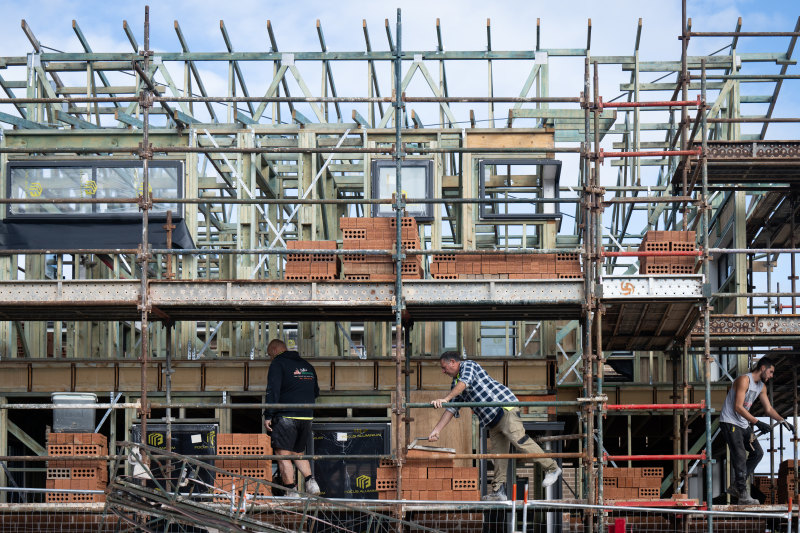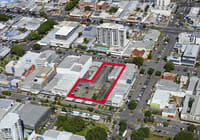
Monitoring of office workers is set to increase in the post-COVID-19 workplace
Increased surveillance of employees at work and in the home will be the trade-off for keeping flexible working arrangements in place long after the immediate threat of COVID-19 has passed, according to workplace experts.
Consulting firm Deloitte’s lead human capital partner in financial services Michael Williams and its virtual office leader Robbie Robertson say it is inevitable that a higher proportion of Deloitte’s own workforce and the industries it services will choose to work from home long after restrictions on office occupancy are lifted.
As employers in the professional services sector – such as financial services, law firms and engineering consultants – make this transition in the months and years ahead, they will increasingly look to monitoring technology, such as software installed on a work-issued laptop, to gain insights into employee productivity, according to Mr Williams.
“I do think organisations will consider productivity monitoring as remote working becomes more prevalent, [but] in order for them to implement those types of technologies they are going to have to seek consent from their employees and having a conversation that is really all about trust,” he said.
Such technology would be less about controlling employee activities and reigning in employee behaviour and more about “empowering people to be effective at work,” but would still require “changing the social contract” concerning employee privacy.
“I liken it to what the Australian government asked us to do with the COVIDSafe app. In exchange for some of our privacy, they offered us more freedom and a faster track to where we want to be and for organisations where people want to work more flexibly that may come with some offsetting requirements – a shift in the way we manage personal privacy,” Mr Williams said.
Conversations about any monitoring would need to be transparent and ethical with employees participating on an opt-in basis, meaning they need to provide consent before any monitoring technology such as software is installed.
“First of all it’s not legal to survey people without notice, particularly with respect to things like productivity. So organisations can’t just start plugging in technologies for the sake of tracking people’s productivity and performance,” Mr Williams said.
“[It] may be a trend we will see over the coming years, but it will have to be handled ethically – organisations will have to think about it from an ethical perspective before they think about it commercially.”
While many large companies will consider adopting increased monitoring, in highly regulated industries such as financial services increased computer monitoring will be essential in order for remote workers to maintain regulatory standards.
“There’s also monitoring with respect to compliance-related activities in organisations– so applications that help with understanding what transactions people are doing, who they are communicating with,” Mr Williams said.
“[For example] financial services is a highly regulated sector and that means that there are a lot of compliance considerations and data-privacy considerations, a lot of business continuity regulations that are highly regulated and need to be managed by financial institutions.”
Practical considerations
Physical monitoring technology will also play an important public health role in a post-pandemic office.
This could include sensors that will monitor desk occupancy, employee movement throughout office zones and even who they interact with during the workday in order to manage the risk of COVID-19 transmission.
“We’re going to have to use technology, we’re going to have to use sensors, to go, ‘What information are we getting back today that’s going to allow us to make an informed decision for tomorrow and for the future?’” Mr Robertson said.
Infrastructure such a temperature monitoring and sensors to measure how much space is used is already being rapidly rolled out in buildings in CBDs across the world.
On a practical level, data from such systems could be used for a desk-booking system – where an online booking platform allocates a desk based on availability – ensuring that an employee has a desk before they set off for work, according to Mr Robertson.
“I think we will see more monitoring of employee movement and interaction as well,” said Mr Williams, adding that any new forms of monitoring in the workplace would also require employee consent.
Mr Williams cited recent work by Salesforce, which has been developing an application to allow companies to manually contact trace individuals inside their buildings based on their interactions inside the property during the day.
JLL’s senior director of tenant representation Kate Pilgrim said technology would also change the way employees interacted with the physical office.
“We expect to see the use of phone apps to call lifts and the increased use of apps to order coffee without having to queue up or wait in the cafe lobby,” Ms Pilgrim said.
“We know that technology currently exists to track and monitor the amount of seating being utilised in office space, so we expect there will be higher use of this kind of technology application.”










